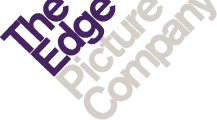No-Cost Digital Strategies to Improve your Bottom Line
We’re positive your competitors are digitally savvy. And if for some reason they’re not, your customers surely are. Appealing to your target audience while standing out from the noise requires a fine-tuned digital strategy to match their online intellect.
But because digital marketing is constantly evolving, it takes a proactive and integrated approach to maximise the right marketing channels for your business.
Before you go all in, make sure you know how to focus and implement your digital strategy.
What is a digital strategy, and why is it important?
HubSpot, a marketing software developer, said it ever so eloquently, “digital strategy is the series of actions you plan and take to achieve your overarching digital marketing goal.” So, how does that differ from digital marketing – or does it?
Again, HubSpot: “In contrast, digital marketing campaigns are the building blocks and actions within your strategy that move you toward a specific, digital end goal.”
Ok brilliant, but why should you care?
Well, if this year is any indication, digital strategies will only continue to increase in importance as businesses move their storefronts and entire workforce online. Now that we’ve seen how convenient mobile working and other digital transformations can be, very few are likely to want to go back.
Since the spring, companies have had to make a hard pivot towards digital strategies in order to survive. We’ve seen changes in everything from where and how we work to the way we virtually “socialise” and “attend” events. And these shifts aren’t going anywhere for the foreseeable future.
What do you need to implement a digital strategy?
Now that you’re sold on why you need a digital strategy, let’s talk about actually implementing one.
First, let us back up and say that before you can implement your strategy, you first need to plan for it. Though it may seem obvious, you’d be surprised how many companies skip this critical step!
For most companies, creating effective digital plans is at least a two-phase process.
1. Start by drafting a separate digital marketing plan. Decide which channels you want to focus your efforts: search marketing and SEO, social media marketing, email marketing, and UX design, etc. Keep it short, using SMART (Specific, Measurable, Attainable, Relevant, and Time-Bound) objectives to support each tactic. Need some help? Smart Insights has some great 90-day planning templates to get you started. After you’ve developed an action plan and have buy-in from your team, you can move on to step #2.
2. Integrate your digital plan into your marketing and business strategies. Once you’ve settled on your KPIs, you can identify your growth points and employ channel-specific software tools as needed to help amplify your content on your preferred digital marketing platforms.
How can a digital strategy grow your business + earn you money?
Implementing a digital strategy is like adding plant food to your garden. Because sometimes, consistently “watering” your audience with content isn’t enough. You need to give them exactly what they’re looking for to help grow your reach.
That’s the other thing about having a well-planned digital strategy. It gives your business the opportunity to get your products or services into the hands of potential customers everywhere. Using digital marketing, you can increase your reach and save money on your marketing spend, all while gathering measurable data that lets you know what’s working, and where to pivot.
In other words, businesses favor online marketing because of its ability to:
- Facilitate interactions with potential customers
- Create content they know holds their interests
- Introduce their business to the global marketplace
- Save money on traditional marketing
- Make a personal connection with their target audience
- Track what’s most effective
No matter how you slice it, there’s few more cost-effective ways to grow your bottom line than having a thoughtful digital marketing strategy. It’s a must no matter your size or industry. And it’s especially timely as corporations and consumers alike look to all things virtual to help them navigate our current global situation.
 Twin Systems
Twin Systems









